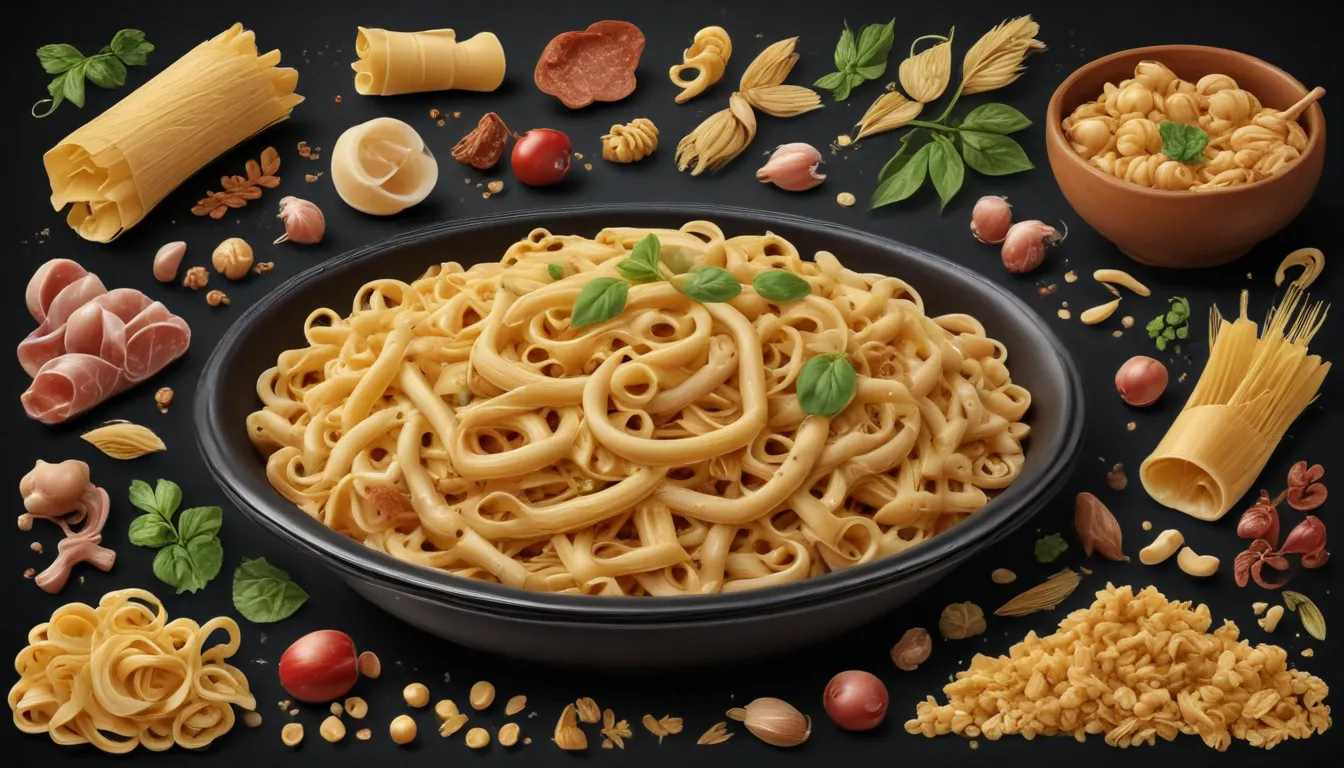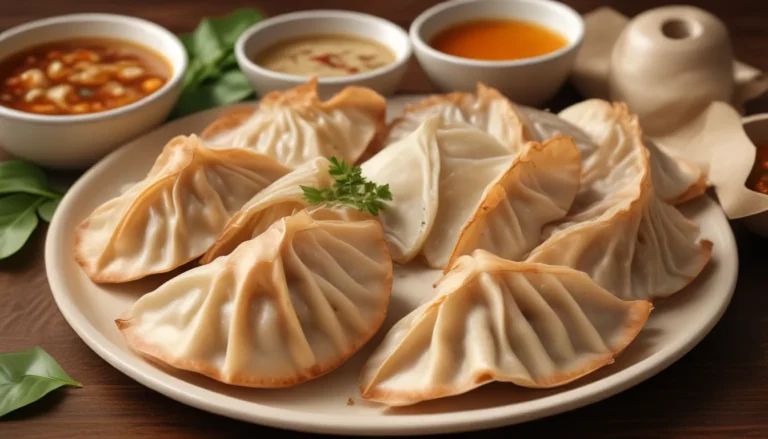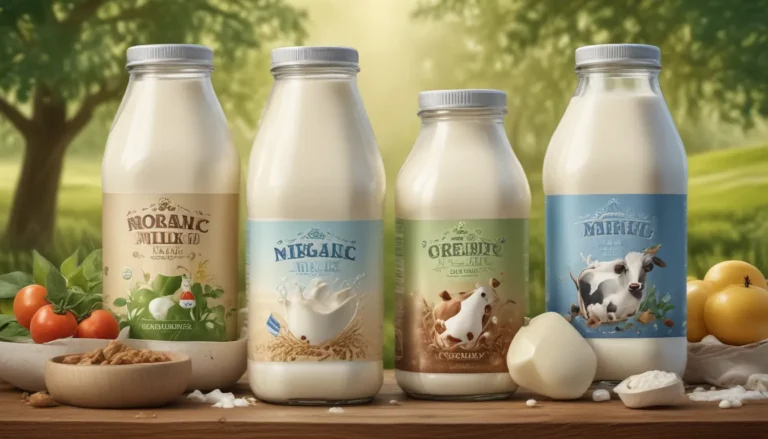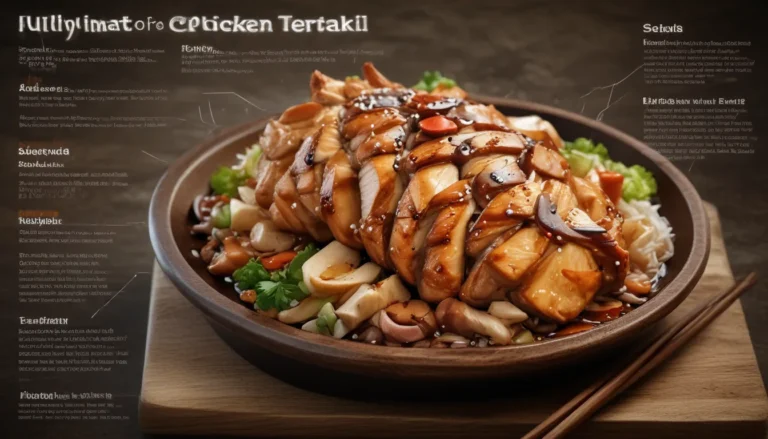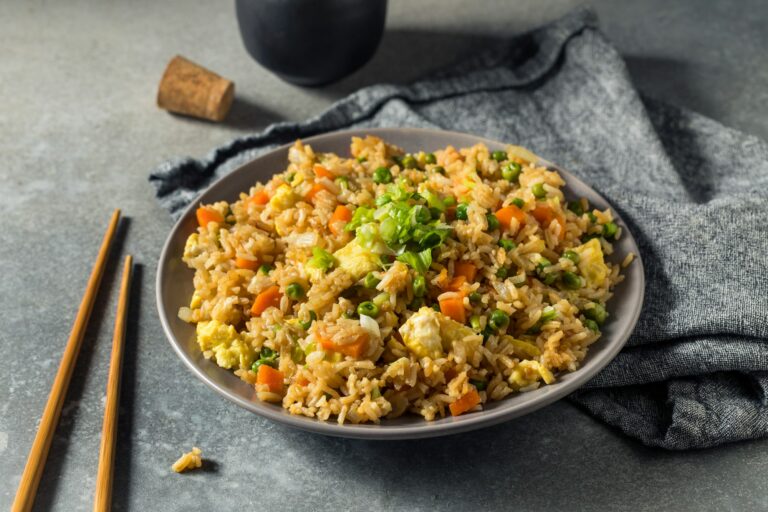The pictures in our articles might not always show exactly what the text is talking about. We use these images to make the article more interesting and eye-catching. They are there to add to the text, but not to replace it or show every detail.
Pasta, the beloved carb-filled delight enjoyed globally, holds a special place in the hearts of food enthusiasts. From its ancient origins to its incredible diversity, pasta has a rich history and a bright future on our plates. In this article, we will delve into 19 fascinating facts about pasta that will deepen your appreciation for this culinary wonder. So, let’s unravel the mysteries and marvels of everyone’s favorite comfort food!
The Origins and Diversity of Pasta
- Pasta’s Rich History: Pasta has been a cherished culinary delight for over 700 years, with its origins dating back to 13th-century Italy.
- Over 600 Pasta Shapes: From spaghetti and penne to fusilli and farfalle, there are over 600 different shapes of pasta, each designed to hold sauce in its unique way.
- Simplicity at its Best: Traditional pasta is made from just two simple ingredients: durum wheat flour and water, allowing the flavors of the sauce to shine.
- National Pasta Association: The National Pasta Association, based in the United States, is dedicated to promoting the nutritional benefits and versatility of pasta.
Pasta: A Culinary Delight with Endless Possibilities
- Perfect Pairings: Different sauces pair best with specific pasta shapes, enhancing the dining experience.
- Source of Energy: Pasta is rich in carbohydrates, making it an excellent source of energy for active individuals.
- Fresh vs. Dried Pasta: While fresh pasta is made with eggs and has a shorter cooking time, dried pasta is made without eggs and has a longer shelf life.
- Cooking Terminology: The term “al dente” refers to pasta cooked to a firm texture, offering a satisfying bite.
Fun Facts and Guinness World Records
- World’s Largest Bowl of Pasta: In 2010, Selvino, Italy, set a Guinness World Record by creating a gigantic bowl of spaghetti that weighed over 17,000 pounds.
- Nutritious Additions: Pasta can be naturally colored using ingredients such as spinach, beetroot, squid ink, or turmeric, adding visual appeal to dishes.
- Long Shelf Life: Dried pasta has a long shelf life, lasting up to two years when stored properly.
- Macaroni and More: Macaroni, a type of pasta characterized by its small, curved shape, is commonly used in dishes like mac and cheese.
Pasta: A Canvas for Culinary Creativity
- Endless Possibilities: Pasta provides endless possibilities for culinary creativity, allowing for unique ingredients and innovative cooking techniques.
- Creative Nomenclature: Some pasta shapes, like linguine and capellini, are whimsically named after body parts.
- Global Consumption: The average American consumes around 20 pounds of pasta per year, showcasing its popularity in the United States.
Pasta: A Versatile and Healthy Option
- Gluten-Free Alternatives: For those with gluten sensitivities, there are various gluten-free pasta options made from alternative flours such as rice flour or quinoa flour.
- Balanced Diet: Pasta can be part of a healthy diet when paired with nutrient-rich ingredients, suitable for vegetarians and meat lovers alike.
- Homemade Delights: Making homemade pasta is a fun and rewarding culinary experience, offering various recipes to explore.
Conclusion: Embracing the Pasta Phenomenon
Pasta, with its versatility, taste, and cultural significance, continues to hold a special place in the hearts of food lovers worldwide. From ancient origins to modern innovations, pasta remains a beloved and timeless dish. With its endless shapes, sizes, and sauces, pasta invites culinary exploration and creativity, making it a crowd-pleaser in any kitchen.
FAQs: Unveiling More Pasta Secrets
- What is the origin of pasta? Pasta originated in China around 2000 BC and was later introduced to Europe by Marco Polo.
- Is all pasta made from wheat? No, there are many alternatives available, such as gluten-free pasta made from rice, corn, or legumes.
- How do you cook pasta al dente? Follow the instructions on the package and remove the pasta from boiling water a minute or two before the recommended cooking time for a firm yet tender texture.
- Can pasta be a part of a healthy diet? Yes, when consumed in moderation and paired with nutrient-rich ingredients, pasta can be a part of a healthy diet.
Hungry for more pasta knowledge? Explore the endless possibilities of pasta with homemade noodles, protein-packed lentil pasta, or guilt-free low-carb options. Satisfy your pasta cravings while discovering even more fun facts!
Remember, each fact shared here is contributed by real users like you, ensuring accuracy and reliability in our content. Trust in our commitment to quality and authenticity as you embark on a delightful pasta journey!
